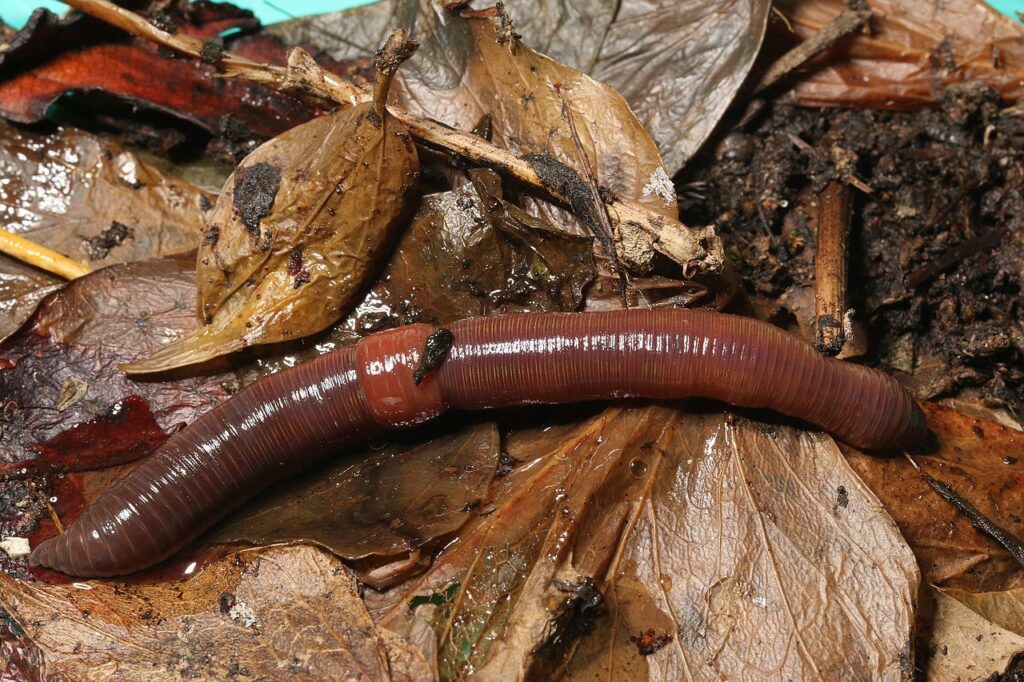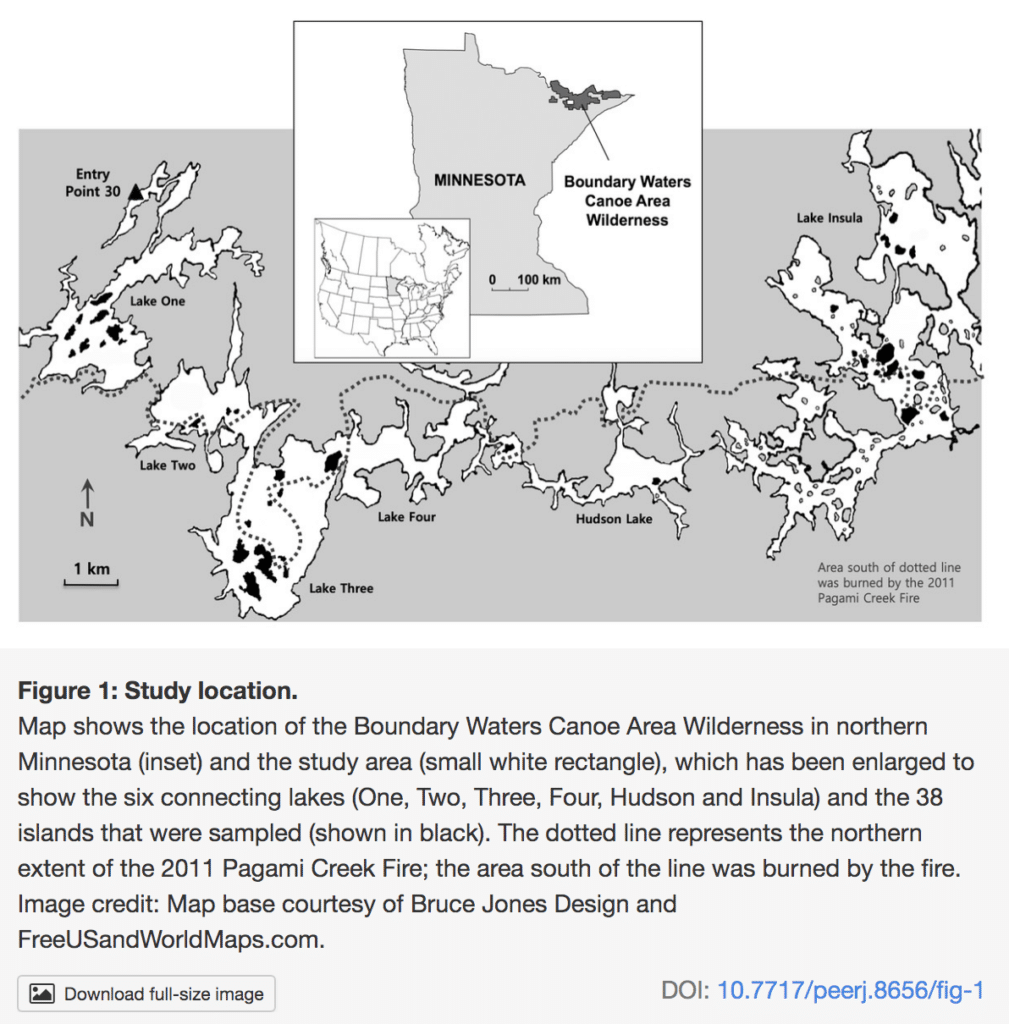
Earthworms are not native to most of Minnesota’s forests, but are widespread because of human activity. Worms can have detrimental effects on the boreal ecosystem in places like the Boundary Waters Canoe Area Wilderness.
New research from a University of Wisconsin-Eau Claire research team reveals how different forces affect the presence of worms.
“Whether measured in terms of biomass or density, earthworms were consistently more abundant on islands with campsites as compared to those without,” the team reported.
By consuming leaf litter and other natural detritus on the forest floor, worms eat seeds, kill plant roots, and increase soil compaction. The loss of the “duff” on the forest floor can also lead to increased warming of the soil, which changes the tree species that can survive there.
The paper also includes important information for anglers: even if the adult worms in a bait container are dead, there may still be viable juvenile worms invisible to the naked eye in the soil. Dumping a container of dead worms can still lead to infestation.
“Earthworms are fundamental ecosystem engineers that change soil structure, seedbeds, nutrient cycles, and the hydrologic cycle,” reported Drs. Lee Frelich and Peter Reich of the University of Minnesota in a 2009 paper.
About one-third of the Boundary Waters is infested with earthworms, and it is thought that they arrive via anglers discarding unused bait. The new study helps quantify the impact of wilderness visitors, providing real-world data to understand the issue. The same team was responsible for another project which studied the presence of microplastics in the BWCAW.
Wilderness worms
The research team sampled 38 islands in the wilderness, some with campsites and some without, and some of which had been recently burned by wildfire, and some which were not. They measured the number of worms at each site, showing how humans and fire influence worm abundance.
“That wilderness campsites may be important points of invasion for non-native species is often overlooked in studies of campsite impacts,” the paper states.
Other studies have examined campsite impacts like soil compaction, erosion, and deforestation.
Fire can also affect earthworm populations, as it will kill worms that live in the leaf litter, and deplete food sources for other species. Fire has been an important part of the Boundary Waters ecosystem for millennia, and the study shows another way in which it can help native organisms.
But the effects of fire were not as apparent as campsites. Islands that had a fire history had lower densities of earthworms, but the overall biomass and species diversity were unaffected.
The last variable was distance from the entry point. The researchers were surprised by their results on that issue. They expected earthworm problems to decrease farther from entry points, but found there was no difference.
The researchers say more study is needed to understand angler behavior. While areas closer to entry points may see more traffic, and thus more potential earthworm introduction, they hypothesize that anglers fishing close to the entry point may be more inclined to save their bait.

References
- Wellnitz T, Barlow JL, Dick CM, Shaurette TR, Johnson BM, Wesley T, Weiher E. 2020. Campsites, forest fires, and entry point distance affect earthworm abundance in the Boundary Waters Canoe Area Wilderness. PeerJ 8:e8656 https://doi.org/10.7717/peerj.8656
- Lee E. Frelich and Peter B. Reich “Wilderness Conservation in an Era of Global Warming and Invasive Species: A Case Study from Minnesota’s Boundary Waters Canoe Area Wilderness,” Natural Areas Journal 29(4), 385-393, (1 October 2009). https://doi.org/10.3375/043.029.0405

